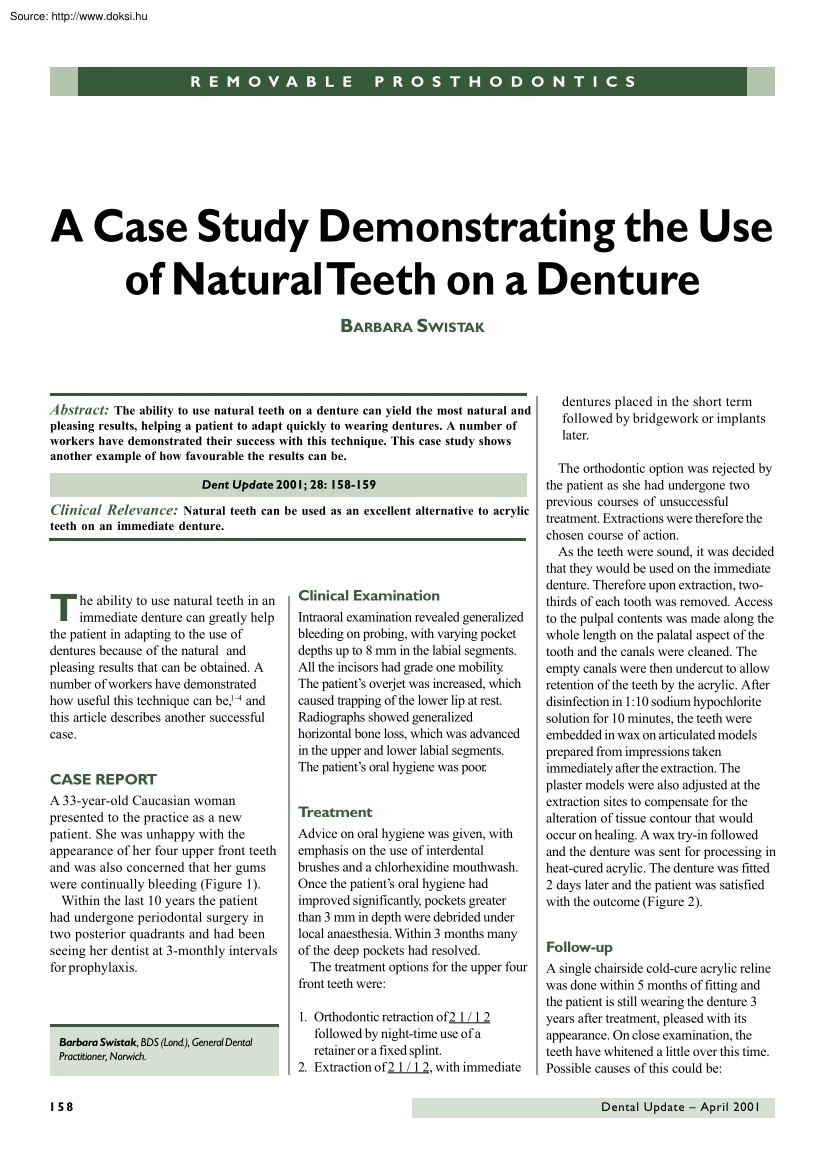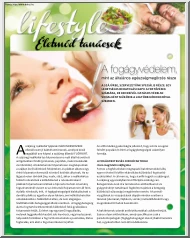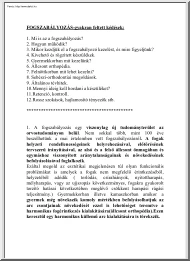Datasheet
Year, pagecount:2001, 2 page(s)
Language:English
Downloads:11
Uploaded:January 03, 2012
Size:142 KB
Institution:
-
Comments:
Attachment:-
Download in PDF:Please log in!
Comments
No comments yet. You can be the first!Most popular documents in this category
Content extract
L N E T IPCRS O S T H O D O N T I C S R E M O V A B L E RP ER M O SOTVH A OB DO A Case Study Demonstrating the Use of Natural Teeth on a Denture BARBARA SWISTAK Abstract: The ability to use natural teeth on a denture can yield the most natural and pleasing results, helping a patient to adapt quickly to wearing dentures. A number of workers have demonstrated their success with this technique. This case study shows another example of how favourable the results can be. Dent Update 2001; 28: 158-159 Clinical Relevance: Natural teeth can be used as an excellent alternative to acrylic teeth on an immediate denture. he ability to use natural teeth in an immediate denture can greatly help the patient in adapting to the use of dentures because of the natural and pleasing results that can be obtained. A number of workers have demonstrated how useful this technique can be,1–4 and this article describes another successful case. T CASE REPORT A 33-year-old Caucasian woman presented to the
practice as a new patient. She was unhappy with the appearance of her four upper front teeth and was also concerned that her gums were continually bleeding (Figure 1). Within the last 10 years the patient had undergone periodontal surgery in two posterior quadrants and had been seeing her dentist at 3-monthly intervals for prophylaxis. Barbara Swistak, BDS (Lond.), General Dental Practitioner, Norwich. 158 Clinical Examination Intraoral examination revealed generalized bleeding on probing, with varying pocket depths up to 8 mm in the labial segments. All the incisors had grade one mobility. The patient’s overjet was increased, which caused trapping of the lower lip at rest. Radiographs showed generalized horizontal bone loss, which was advanced in the upper and lower labial segments. The patient’s oral hygiene was poor. Treatment Advice on oral hygiene was given, with emphasis on the use of interdental brushes and a chlorhexidine mouthwash. Once the patient’s oral hygiene had
improved significantly, pockets greater than 3 mm in depth were debrided under local anaesthesia. Within 3 months many of the deep pockets had resolved. The treatment options for the upper four front teeth were: 1. Orthodontic retraction of 2 1 / 1 2 followed by night-time use of a retainer or a fixed splint. 2. Extraction of 2 1 / 1 2, with immediate dentures placed in the short term followed by bridgework or implants later. The orthodontic option was rejected by the patient as she had undergone two previous courses of unsuccessful treatment. Extractions were therefore the chosen course of action. As the teeth were sound, it was decided that they would be used on the immediate denture. Therefore upon extraction, twothirds of each tooth was removed Access to the pulpal contents was made along the whole length on the palatal aspect of the tooth and the canals were cleaned. The empty canals were then undercut to allow retention of the teeth by the acrylic. After disinfection in 1:10
sodium hypochlorite solution for 10 minutes, the teeth were embedded in wax on articulated models prepared from impressions taken immediately after the extraction. The plaster models were also adjusted at the extraction sites to compensate for the alteration of tissue contour that would occur on healing. A wax try-in followed and the denture was sent for processing in heat-cured acrylic. The denture was fitted 2 days later and the patient was satisfied with the outcome (Figure 2). Follow-up A single chairside cold-cure acrylic reline was done within 5 months of fitting and the patient is still wearing the denture 3 years after treatment, pleased with its appearance. On close examination, the teeth have whitened a little over this time. Possible causes of this could be: Dental Update – April 2001 R E M OVA B L E P RO S T H O D O N T I C S labially on the denture teeth – this could also be explained by desiccation of the tooth tissue. The long-term plan is to replace the
denture with a bridge. A fixed–fixed Maryland bridge is being considered with retainers on the canines. This type of bridge is particularly suitable as there is a Class II Division 1 incisor relationship and there is an open bite associated with the canines. Photographs of the immediate denture alongside impressions of the denture in situ will be used to try to reproduce pontics of the same mould as the natural teeth. In retrospect, it would have been advantageous to have taken a note of the shade of the teeth before their loss in hue. Nevertheless, a good shade match should be obtained using the remaining dentition. a b c a b c COMMENT Figure 1 (a - c). The appearance before extraction of the four upper incisors. ! the use of sodium hypochlorite-based cleansing agents; ! desiccation of the teeth through the persistence of incompetent lips or the lack of dentinal tubular fluid. Fine fracture lines are also appearing ABSTRACT CAN THE COMPUTER DO THE DENTISTRY? Caries Risk
Assessment: A Comparison Between the Computer Program ‘Cariogram’, Dental Hygienists and Dentists. GH Petersson and D. Bratthall Swedish Dental Journal 2000; 24: 129–137. The student review in my final year at dental school involved a machine Dental Update – April 2001 The use of this patient’s natural teeth on her immediate denture has produced very acceptable results. This case demonstrates how natural teeth can be considered as an alternative to acrylic teeth. The chemical retention that is present with acrylic teeth will not be possible but, provided that the root canals have a large amount of undercut, there should be sufficient mechanical retention to keep the teeth in place. Figure 2 (a - c). The denture in place 2. 3. 4. R EFERENCES 1. Carduso A, Arcari G, Zendron M, Souza Magini called the ‘omnitron’, which would diagnose and treat all dental problems. The researchers in this report investigated a computer program called ‘Cariogram’, designed to assess
caries risk. In essence, it is a greatly advanced version of the three circle diagram of Keyes, which interprets data obtained from patient questionnaires. The investigation was to compare the ‘opinion’ of the program with that of a dental surgeon and a hygienist. It was indeed found that there was a R. The use of natural teeth to make removable partial prostheses and complete prostheses: Case reports. Quint Int 1994; 25: 239–243 Burger H. Immediate dentures utilizing the natural dentition. Gen Dent 1980; 28: 34–37 Fenton A. Interim overdentures J Prosthet Dent 1976; 36: 4–12. Kafandaris N, Theodorou T. Complete denture technique using natural anterior teeth. J Prosthet Dent 1975; 33: 571–574. significant correlation between the computer program and clinical examination by both groups of healthcare workers. In addition, it was found that the program induced discussions over the impact of various aetiological factors of caries. The authors suggest that the program would be
a valuable addition to both the teaching of cariology, and to communicating findings with patients. Peter Carrotte Glasgow Dental School 159
practice as a new patient. She was unhappy with the appearance of her four upper front teeth and was also concerned that her gums were continually bleeding (Figure 1). Within the last 10 years the patient had undergone periodontal surgery in two posterior quadrants and had been seeing her dentist at 3-monthly intervals for prophylaxis. Barbara Swistak, BDS (Lond.), General Dental Practitioner, Norwich. 158 Clinical Examination Intraoral examination revealed generalized bleeding on probing, with varying pocket depths up to 8 mm in the labial segments. All the incisors had grade one mobility. The patient’s overjet was increased, which caused trapping of the lower lip at rest. Radiographs showed generalized horizontal bone loss, which was advanced in the upper and lower labial segments. The patient’s oral hygiene was poor. Treatment Advice on oral hygiene was given, with emphasis on the use of interdental brushes and a chlorhexidine mouthwash. Once the patient’s oral hygiene had
improved significantly, pockets greater than 3 mm in depth were debrided under local anaesthesia. Within 3 months many of the deep pockets had resolved. The treatment options for the upper four front teeth were: 1. Orthodontic retraction of 2 1 / 1 2 followed by night-time use of a retainer or a fixed splint. 2. Extraction of 2 1 / 1 2, with immediate dentures placed in the short term followed by bridgework or implants later. The orthodontic option was rejected by the patient as she had undergone two previous courses of unsuccessful treatment. Extractions were therefore the chosen course of action. As the teeth were sound, it was decided that they would be used on the immediate denture. Therefore upon extraction, twothirds of each tooth was removed Access to the pulpal contents was made along the whole length on the palatal aspect of the tooth and the canals were cleaned. The empty canals were then undercut to allow retention of the teeth by the acrylic. After disinfection in 1:10
sodium hypochlorite solution for 10 minutes, the teeth were embedded in wax on articulated models prepared from impressions taken immediately after the extraction. The plaster models were also adjusted at the extraction sites to compensate for the alteration of tissue contour that would occur on healing. A wax try-in followed and the denture was sent for processing in heat-cured acrylic. The denture was fitted 2 days later and the patient was satisfied with the outcome (Figure 2). Follow-up A single chairside cold-cure acrylic reline was done within 5 months of fitting and the patient is still wearing the denture 3 years after treatment, pleased with its appearance. On close examination, the teeth have whitened a little over this time. Possible causes of this could be: Dental Update – April 2001 R E M OVA B L E P RO S T H O D O N T I C S labially on the denture teeth – this could also be explained by desiccation of the tooth tissue. The long-term plan is to replace the
denture with a bridge. A fixed–fixed Maryland bridge is being considered with retainers on the canines. This type of bridge is particularly suitable as there is a Class II Division 1 incisor relationship and there is an open bite associated with the canines. Photographs of the immediate denture alongside impressions of the denture in situ will be used to try to reproduce pontics of the same mould as the natural teeth. In retrospect, it would have been advantageous to have taken a note of the shade of the teeth before their loss in hue. Nevertheless, a good shade match should be obtained using the remaining dentition. a b c a b c COMMENT Figure 1 (a - c). The appearance before extraction of the four upper incisors. ! the use of sodium hypochlorite-based cleansing agents; ! desiccation of the teeth through the persistence of incompetent lips or the lack of dentinal tubular fluid. Fine fracture lines are also appearing ABSTRACT CAN THE COMPUTER DO THE DENTISTRY? Caries Risk
Assessment: A Comparison Between the Computer Program ‘Cariogram’, Dental Hygienists and Dentists. GH Petersson and D. Bratthall Swedish Dental Journal 2000; 24: 129–137. The student review in my final year at dental school involved a machine Dental Update – April 2001 The use of this patient’s natural teeth on her immediate denture has produced very acceptable results. This case demonstrates how natural teeth can be considered as an alternative to acrylic teeth. The chemical retention that is present with acrylic teeth will not be possible but, provided that the root canals have a large amount of undercut, there should be sufficient mechanical retention to keep the teeth in place. Figure 2 (a - c). The denture in place 2. 3. 4. R EFERENCES 1. Carduso A, Arcari G, Zendron M, Souza Magini called the ‘omnitron’, which would diagnose and treat all dental problems. The researchers in this report investigated a computer program called ‘Cariogram’, designed to assess
caries risk. In essence, it is a greatly advanced version of the three circle diagram of Keyes, which interprets data obtained from patient questionnaires. The investigation was to compare the ‘opinion’ of the program with that of a dental surgeon and a hygienist. It was indeed found that there was a R. The use of natural teeth to make removable partial prostheses and complete prostheses: Case reports. Quint Int 1994; 25: 239–243 Burger H. Immediate dentures utilizing the natural dentition. Gen Dent 1980; 28: 34–37 Fenton A. Interim overdentures J Prosthet Dent 1976; 36: 4–12. Kafandaris N, Theodorou T. Complete denture technique using natural anterior teeth. J Prosthet Dent 1975; 33: 571–574. significant correlation between the computer program and clinical examination by both groups of healthcare workers. In addition, it was found that the program induced discussions over the impact of various aetiological factors of caries. The authors suggest that the program would be
a valuable addition to both the teaching of cariology, and to communicating findings with patients. Peter Carrotte Glasgow Dental School 159





 Just like you draw up a plan when you’re going to war, building a house, or even going on vacation, you need to draw up a plan for your business. This tutorial will help you to clearly see where you are and make it possible to understand where you’re going.
Just like you draw up a plan when you’re going to war, building a house, or even going on vacation, you need to draw up a plan for your business. This tutorial will help you to clearly see where you are and make it possible to understand where you’re going.